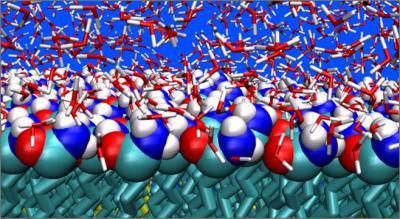Laying Microscale Tiles
Microcrystalline monolayers: Laying by hand is superior to self-assembly methods
Advertisement
Craftsmen tile walls or floors by hand; but how can you get an ordered monolayer onto a substrate when the "tiles" are microscopically small instead of big and easy to handle? Previously, self-assembly processes have been the method of choice for this scale. Korean researchers have now come to the realization that even such tiny components can be arranged in a "do-it-yourself" method. As they describe in the journal Angewandte Chemie, their manually produced monolayers of microcrystals are qualitatively superior to the self-assembled variety.
How small can components be such that they can still be glued to a surface by hand? And conversely, how big can microscale components be such that they can still be arranged by self-assembly? Which method is best in the size range in which both techniques work? These questions have been investigated by a team led by Kyung Byung Yoon at Sogang University in Seoul. To find answers, they carried out experiments with variously sized zeolite crystals. Zeolites are aluminosilicate minerals with a wide range of applications in many technical fields.
The powdered zeolite was applied by simply rubbing it on with a finger (with and without wearing a latex glove). Alternatively, they were applied in solution, and ultrasound was used to kick-start the self-assembly process. The "glue" between the "mini-tiles" and the substrate was the attraction between oppositely charged groups of atoms, hydrogen bonds, and chemical bonds between reactive groups of atoms.
The experiments demonstrated that self-assembly only works for particles smaller than about 3 µm. Hand-application works for crystals as small as 0.5 µm in diameter. In the overlapping range (0.5 to 3 µm), hand application is preferable to self-assembly for quality: the packing is denser and the microcrystals are oriented more regularly. Whereas self-assembly produces individual crystals grown at a 90° angle onto the monolayer, such "parasites" are simply rubbed off by hand. There are other "handy" advantages of the manual process as well: it is simpler, doesn't require a solvent or special equipment, runs more smoothly, and allows treatment of larger surfaces.
Originalveröffentlichung: Kyung Byung Yoon et al.; "Manual Assembly of Microcrystal Monolayers on Substrates"; Angewandte Chemie International Edition 2007, 46, No. 17.
























































